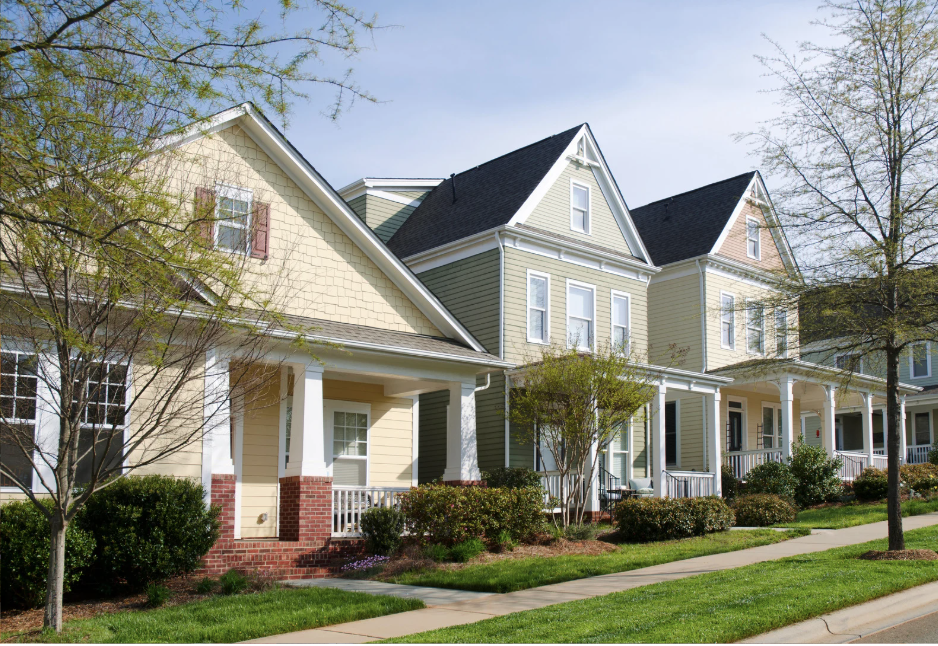Understanding the Growth of Multigenerational Living Arrangements
In recent years, the concept of multigenerational living arrangements has gained considerable traction across various regions. Traditional family structures have evolved, leading to a greater acceptance and preference for living with extended family members, such as grandparents, aunts, uncles, or cousins. This shift in lifestyle is primarily driven by economic factors, cultural values, and changing societal norms. As a result, there is a notable increase in demand for larger homes that can accommodate these diverse family dynamics.
The Characteristics of Multigenerational Homes
Multigenerational homes typically feature multiple bedrooms, bathrooms, and separate living spaces. These homes often come equipped with additional amenities such as kitchenettes or private entrances to ensure both privacy and shared communal living. Areas designed for social interaction are integral to these homes, as families seek to foster connections among generations while also maintaining their independence. This design philosophy is becoming increasingly popular among builders and real estate agents who are responding to changing market demands.
The Economic Factors Behind the Trend
One of the primary drivers of the multigenerational living trend is the financial landscape. Rising housing costs and prevailing economic uncertainties have encouraged families to pool their resources. By living together, families can share expenses such as mortgages, utilities, and other living costs. This arrangement often makes homeownership more feasible, particularly for younger individuals or families who may struggle to afford housing independently due to student loan debt or stagnant wages.
Cultural Influences on Multigenerational Living
Cultural values deeply influence the choice of multigenerational living. In many cultures, there is a strong emphasis on family unity and support, wherein older generations are expected to live close to, or with, younger family members. This arrangement not only provides emotional and practical support but also reinforces familial bonds. In opposition to more traditional Western values prioritizing independence, many families from Asian, Hispanic, and African backgrounds tend to embrace these collective living situations, resulting in a wider acceptance of this lifestyle across diverse communities.
The Role of Builders and Real Estate Agents
The increasing demand for multigenerational homes is creating new opportunities for builders and real estate agents. To cater to this growing market segment, builders are now focusing on developing designs that prioritize flexibility and adaptability. Homes that feature multiple suites or separate living areas are becoming commonplace, increasing the overall appeal of these properties. Similarly, real estate agents are finding unique selling points within these homes, emphasizing their ability to accommodate larger families or provide rental opportunities with distinct living spaces.
Market Adaptations and Innovations
As builders and real estate agents respond to the demands of multigenerational living, we are witnessing innovations in home design and sales strategies. Emerging architectural trends include open floor plans that facilitate interaction among family members while also allowing for distinct private spaces. Energy-efficient designs and sustainable building materials are also becoming increasingly important, attracting environmentally-conscious buyers. By adapting to the needs of multigenerational families, the real estate market not only thrives but also encourages a more integrated and supportive living environment.
Future Outlook for Multigenerational Living
As we move forward, it is anticipated that the trend of multigenerational living will continue to grow. Factors such as rising housing costs, changing demographics, and the effects of the COVID-19 pandemic, which emphasized the importance of family support systems, all suggest a future where these living arrangements remain prevalent. Additionally, societal attitudes continue to embrace diverse family structures, leading to even greater acceptance and normalization of multigenerational households.
Conclusion
In summary, the rise of multigenerational living arrangements represents a significant shift in modern housing trends. With builders and real estate agents increasingly catering to this market, there is a promising outlook for larger homes that accommodate the unique needs of extended families. This approach not only meets the economic demands of today’s world but also reflects changing cultural values that prioritize connection, support, and shared living. As trends continue to evolve, multigenerational living may very well become a foundational aspect of our housing landscape.
FAQs
What is a multigenerational home?
A multigenerational home is a residence that accommodates more than one generation of family members. These homes often feature separate living spaces, such as suites, to provide privacy while still allowing for communal living.
What are the benefits of multigenerational living arrangements?
Benefits include shared living costs, emotional support among family members, cultural bonding, and the ability to care for elderly relatives within a familiar environment.
How is the real estate market adapting to this trend?
Builders are developing homes with flexible floor plans that include multiple bedrooms and independent living spaces. Real estate agents are highlighting these features to attract buyers seeking multigenerational living solutions.
Are multigenerational homes more expensive than traditional homes?
While they may appear more expensive upfront due to their size and additional features, the overall costs can be mitigated through shared living expenses among residents, making them more economical in the long run.
What cultural factors contribute to multigenerational living?
Cultural factors include values that prioritize family togetherness, mutual support, and the expectation of older family members living with younger generations, which is prevalent in many non-Western cultures.

